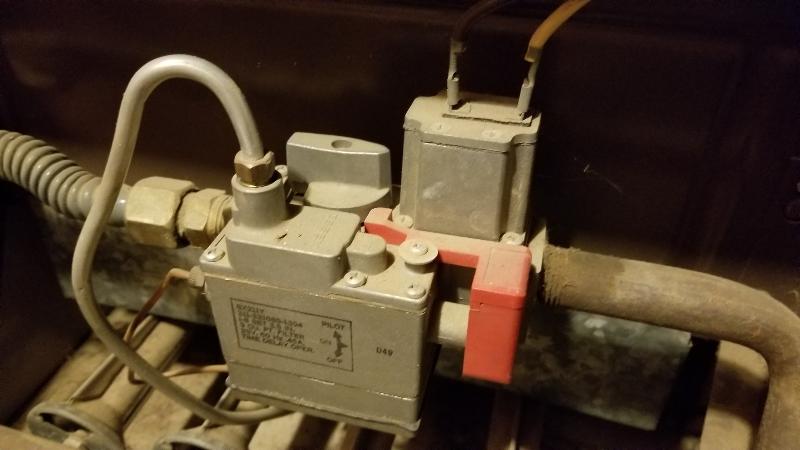Hardware
--
Questions
--
Followers
Top Experts
I attached a few pictures. I can fire up the pilot. However, when switching to the burner the pilot shuts off. Also notices the pilot flares a lot larger than usual. I replaced a thermocouple last year. That didn't help.
Any suggestion or maybe someone knows another 'hvac' specific forum?
Thanks in advance!!
untitled.png
untitled1.png
untitled2.png
untitled3.png
untitled4.png
untitled5.png
untitled6.png
Zero AI Policy
We believe in human intelligence. Our moderation policy strictly prohibits the use of LLM content in our Q&A threads.
I wouldn't even think twice on replacing it. I believe that model has a 20-25 year life cycle.
Don't mess around faulty furnaces can be dangerous.
One issue that others with intimate knowledge of the North American furnaces can comment on is that of the exhaust flue. Old systems in the UK used air from the room to combust with the gas and expelled it through a single-walled flue. Houses had to have air vents in the walls to allow fresh air to be replenished. A lot of people blocked those vents and sealed teir doors and windows against draughts, but this resulted in valuable oxygen in the house being gradually used up.
This has happened here in the US as well. Code requires adequate air flow to the unit, but when we bought our current house, many of the crawl space vents were indeed blocked. After an inspection, they said there was still plenty of air flow, but it was a good idea to check. They did require a carbon dioxide detector to be installed in the room adjacent to the furnace to be sure the unit was not filling the house with CO2, which thankfully has never gone off.
As for the life of a furnace, I have done quite a bit of research on this. If you use your furnace quite often all year round, 25 years is about the right time to replace it. But here in California we use it not very often. Our mid70s unit was just inspected (we do it yearly) by someone who sells new units. He told me that there was 10+ years life left, it was running at 80%+ efficiency, while a new unit in our price (4 to 5k) range would only be 85%+ efficient, so we might as well wait. ( The super efficient ones were $8000 to $10000!)
My suggestion is to disregard us all, as our OPINIONS are going to vary. Pay the money to have it inspected by a professional. They can clean it at the same time to keep it running and tell you if it needs replacement. If it needs to be replaced, get multiple bids, and make them detail what is included. I suspect with a unit that old that duct work will also be needed, as well as bringing the space up to current code, which can add “surprise” costs at install time. Ask a lot of questions. We noted that estimates varied all over the place, so some research into heater units might be worth while too.
Good luck






EARN REWARDS FOR ASKING, ANSWERING, AND MORE.
Earn free swag for participating on the platform.
Check Yelp and your local Nectdoor for recommendations.
There should be a red knob on the top that has positions for OFF, ON, and LIGHT.
Any competent heater repair company can replace it with a newer compatible valve. It will look something like this:
https://www.ebay.com/bhp/furnace-gas-valve
Hope that helps.

Get a FREE t-shirt when you ask your first question.
We believe in human intelligence. Our moderation policy strictly prohibits the use of LLM content in our Q&A threads.






EARN REWARDS FOR ASKING, ANSWERING, AND MORE.
Earn free swag for participating on the platform.

Get a FREE t-shirt when you ask your first question.
We believe in human intelligence. Our moderation policy strictly prohibits the use of LLM content in our Q&A threads.
Hardware
--
Questions
--
Followers
Top Experts
Hardware includes cell phones and other digital living devices, tablets, computers, servers, peripherals and components, printers and scanners, gaming consoles, networking hardware such as routers, hubs, switches and modems, storage devices and security equipment such as firewalls and other appliances.
